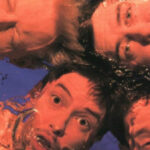 Television, one of the most influential and enigmatic bands to emerge from New York City’s punk rock scene, remains a defining force in the history of rock music. Their innovative approach to punk rock, marked by intricate guitar work and poetic lyrics, set them apart from their contemporaries. This article delves into the rich history of Television, exploring their origins, rise to prominence, influential albums, and the impact they’ve had on the music world.
Television, one of the most influential and enigmatic bands to emerge from New York City’s punk rock scene, remains a defining force in the history of rock music. Their innovative approach to punk rock, marked by intricate guitar work and poetic lyrics, set them apart from their contemporaries. This article delves into the rich history of Television, exploring their origins, rise to prominence, influential albums, and the impact they’ve had on the music world.
Origins and Formation
The story of Television begins in the early 1970s, a period of great upheaval and transformation in the New York music scene. The city was a melting pot of musical innovation, with the burgeoning punk rock movement providing a platform for artists to experiment and redefine rock music. Among the many acts emerging from this vibrant scene, Television would soon distinguish itself with a sound that was both revolutionary and deeply rooted in the city’s diverse musical landscape.
Television was formed by Richard Lloyd, Tom Verlaine, and Billy Ficca in 1973. Tom Verlaine, born Thomas Miller, was the creative force behind the band. A charismatic and enigmatic figure, Verlaine’s guitar playing and distinctive vocal style would become central to Television’s identity. Richard Lloyd, a virtuoso guitarist with a penchant for complex, melodic solos, complemented Verlaine’s innovative approach to the instrument. Billy Ficca, on drums, provided the band’s rhythmic backbone with a style that was both precise and propulsive.
Initially, the band was completed by bassist Richard Hell. Hell’s raw, confrontational style and his punk rock sensibilities were a crucial part of Television’s early sound. However, tensions between Hell and Verlaine, driven by creative differences and personal conflicts, eventually led to Hell’s departure. He would go on to form his own influential band, The Voidoids, further contributing to the punk rock movement.
Following Hell’s exit, Television recruited Fred Smith, a versatile bassist with experience in a variety of genres. Smith’s arrival marked the beginning of a more cohesive and refined period for the band, allowing them to focus on their unique sound and solidify their place in the punk rock scene.
The CBGB Era and Rise to Prominence
Television’s rise to prominence is inextricably linked to CBGB, the iconic club on the Bowery in Manhattan that became the epicenter of the punk rock movement. CBGB was founded by Hilly Kristal in 1973 and quickly became known for its no-frills approach to live music, providing a platform for a new generation of artists to showcase their talent. It was here that Television, along with other pioneering bands like the Ramones, Blondie, and Patti Smith, honed their craft and developed their distinctive sound.
The band’s early performances at CBGB were marked by a raw intensity and a level of technical proficiency that set them apart from their peers. Television’s shows were characterized by extended, improvisational guitar solos, complex song structures, and a lyrical approach that combined elements of surrealism, existentialism, and urban poetry. Their live sets were a testament to their musical prowess and a reflection of the band’s commitment to pushing the boundaries of rock music.
Television’s breakthrough came with the release of their debut album, Marquee Moon, in 1977. The album was a critical and commercial success, and it remains a seminal work in the history of punk rock. Marquee Moon was characterized by its intricate guitar work, blending melodic solos with punk’s raw energy. The title track, a nearly 11-minute epic, showcased the band’s ability to fuse complexity with accessibility, and it became one of their most celebrated songs.
The album’s influence extended far beyond the punk rock scene. Its innovative guitar interplay, poetic lyrics, and unconventional song structures had a profound impact on the development of alternative rock and post-punk music. Marquee Moon has since been hailed as one of the greatest albums of all time, and its enduring legacy is a testament to Television’s artistry and vision.
The Impact of Marquee Moon and Adventure
Following the success of Marquee Moon, Television released their second album, Adventure, in 1978. While Adventure did not achieve the same level of critical acclaim as its predecessor, it was still an important and influential work. The album featured a more polished production and a somewhat different approach to songwriting, reflecting the band’s evolution and experimentation.
Adventure continued to showcase Television’s distinctive sound, with its intricate guitar arrangements and introspective lyrics. However, the album’s reception was mixed, and it failed to replicate the commercial success of Marquee Moon. Despite this, Adventure remains a crucial part of Television’s discography and is appreciated by fans and critics alike for its artistic merit.
The band’s influence during this period extended beyond their own recordings. Television’s innovative approach to guitar playing and songwriting inspired a new generation of musicians, including bands like Talking Heads, The Pretenders, and U2. Their emphasis on musical experimentation and lyrical depth helped shape the direction of punk rock and its subsequent offshoots.
Internal Struggles and Breakup
Despite their artistic success, Television faced significant internal struggles during the late 1970s and early 1980s. The band’s members had different visions for the future, and tensions began to mount. Verlaine’s creative control over the band, combined with his strained relationships with other members, led to disagreements and conflicts.
In 1979, Television embarked on a European tour, but the tour was marred by personal and professional difficulties. The band’s internal discord reached a breaking point, and after returning from the tour, Television went on hiatus. The members pursued individual projects, and it became clear that the band was unlikely to continue in its previous form.
During the hiatus, Verlaine released his solo debut album, Tom Verlaine, in 1979. The album received positive reviews and showcased Verlaine’s distinctive guitar style and lyrical prowess. Despite his success as a solo artist, Verlaine’s desire to reunite with Television remained strong, and he continued to work towards a possible revival of the band.
The Reunion and Subsequent Work
Television’s reunion in 1992 marked the beginning of a new chapter in the band’s history. The reunion was driven by a renewed interest in the band’s music and a desire to revisit the groundbreaking work they had done in the late 1970s. The original lineup of Verlaine, Lloyd, Ficca, and Smith reunited to record new material and tour.
The band’s first release after the reunion was Television, a self-titled album released in 1992. The album received mixed reviews, with some critics praising the band’s return to form and others expressing disappointment at the lack of innovation compared to their earlier work. Despite the mixed reception, the album showcased the band’s continued commitment to their distinctive sound and provided fans with new material to enjoy.
Following the release of Television, the band continued to tour and perform, but the lineup underwent several changes. Richard Lloyd left the band in 2007, and his departure led to the recruitment of guitarist Jimmy Ripp. Despite these changes, Television remained active and continued to perform live, maintaining their status as influential pioneers of punk rock.
In 2015, Television released Adventure, a follow-up album to their 1978 release. The album featured a mix of new material and reworked versions of classic songs, demonstrating the band’s ongoing creativity and dedication to their craft. While Adventure did not achieve the same level of success as their earlier work, it was a testament to Television’s enduring legacy and their continued influence on the rock music landscape.
Legacy and Influence
Television’s impact on rock music cannot be overstated. Their innovative approach to guitar playing, complex song structures, and poetic lyrics helped define the punk rock movement and set the stage for the development of alternative rock and post-punk music.
The band’s influence extends beyond their own genre. Television’s emphasis on artistic integrity, experimentation, and originality has inspired countless musicians and bands across a variety of genres. Their work has been cited as an influence by artists ranging from indie rock bands like R.E.M. and Sonic Youth to alternative rock acts like U2 and Radiohead.
Television’s contribution to music history is also reflected in their critical acclaim. Marquee Moon is frequently cited as one of the greatest albums of all time, and the band’s innovative approach to songwriting and guitar playing has been widely praised. Their influence can be heard in the music of many contemporary artists, and their legacy continues to inspire new generations of musicians.
Conclusion
The history of Television is a testament to the power of innovation and artistic vision. From their early days in New York City’s punk rock scene to their continued influence on the music world, Television remains a pioneering force in rock music. Their groundbreaking work, marked by intricate guitar arrangements, poetic lyrics, and a commitment to artistic integrity, has left an indelible mark on the history of music.
Despite the challenges and changes they faced throughout their career, Television’s legacy endures. Their contributions to punk rock and their influence on subsequent generations of musicians are a testament to their enduring impact and significance. As one of the defining bands of the punk rock era, Television’s journey is a reminder of the power of creativity, innovation, and the pursuit of artistic excellence.
This post has already been read 424 times!








